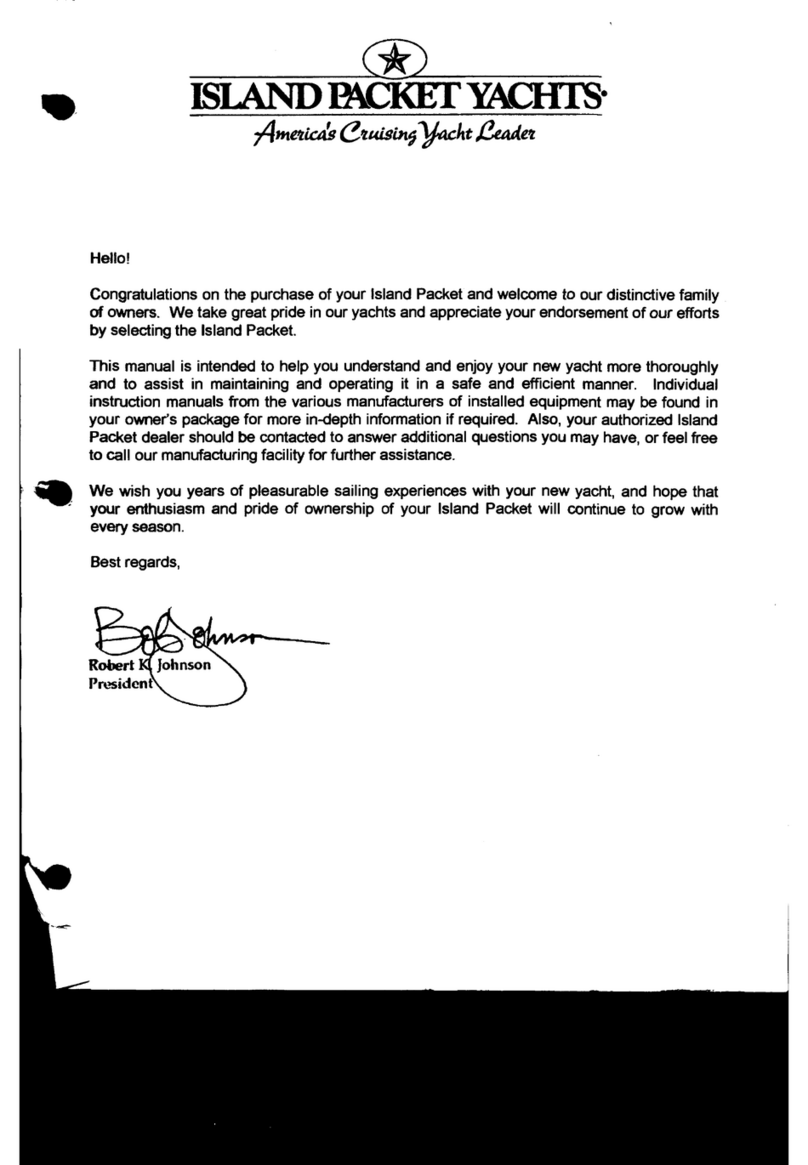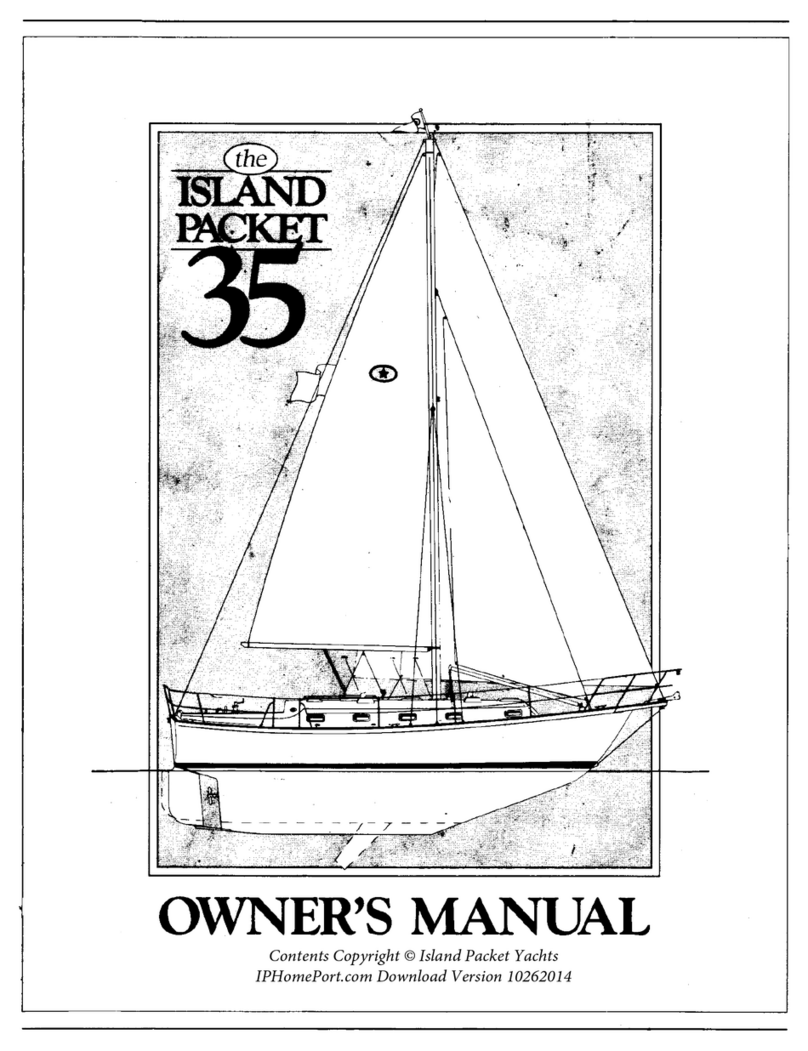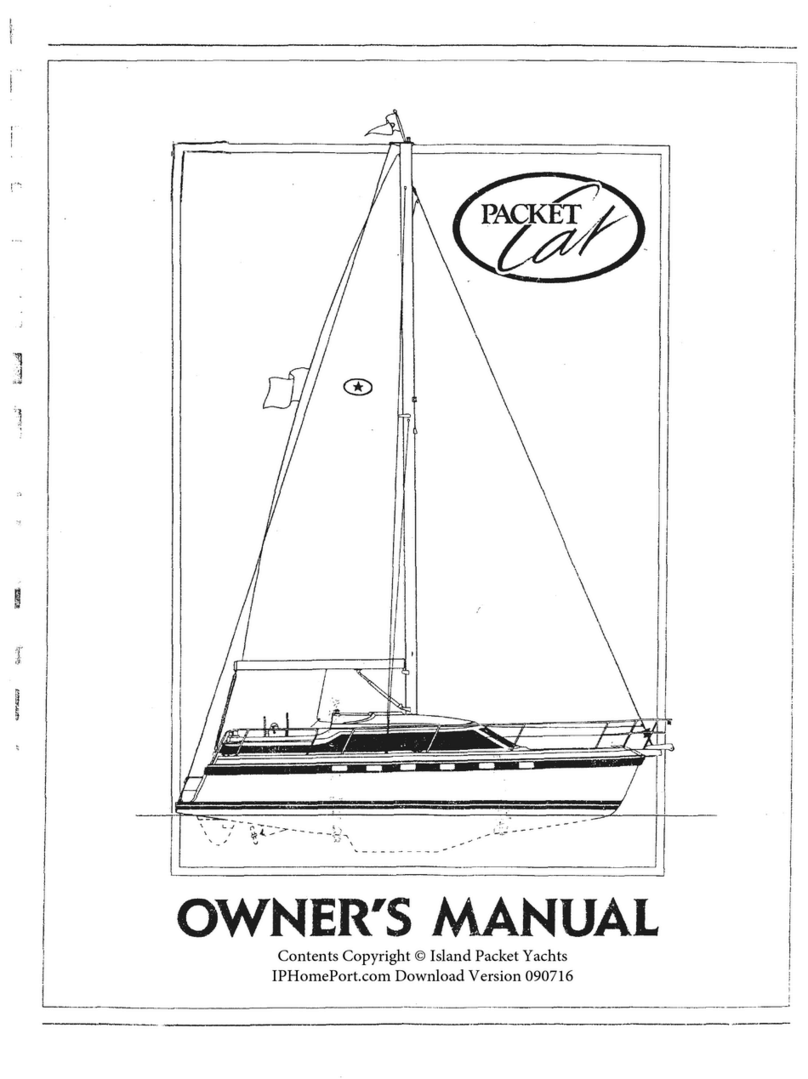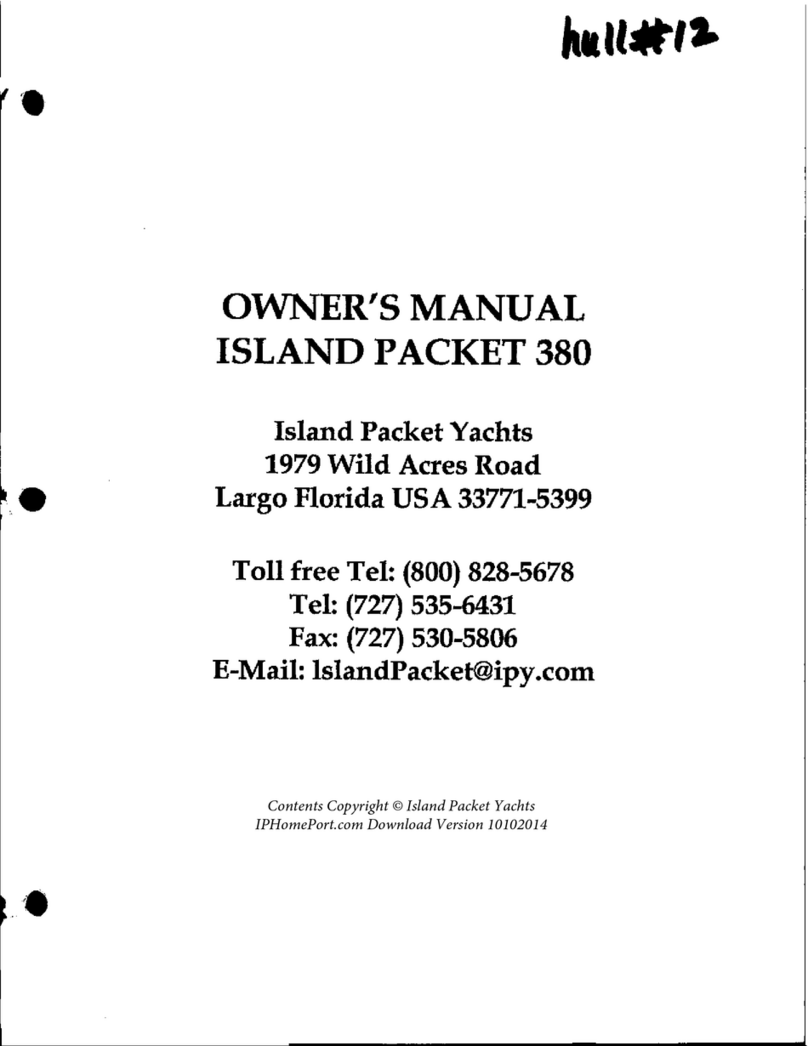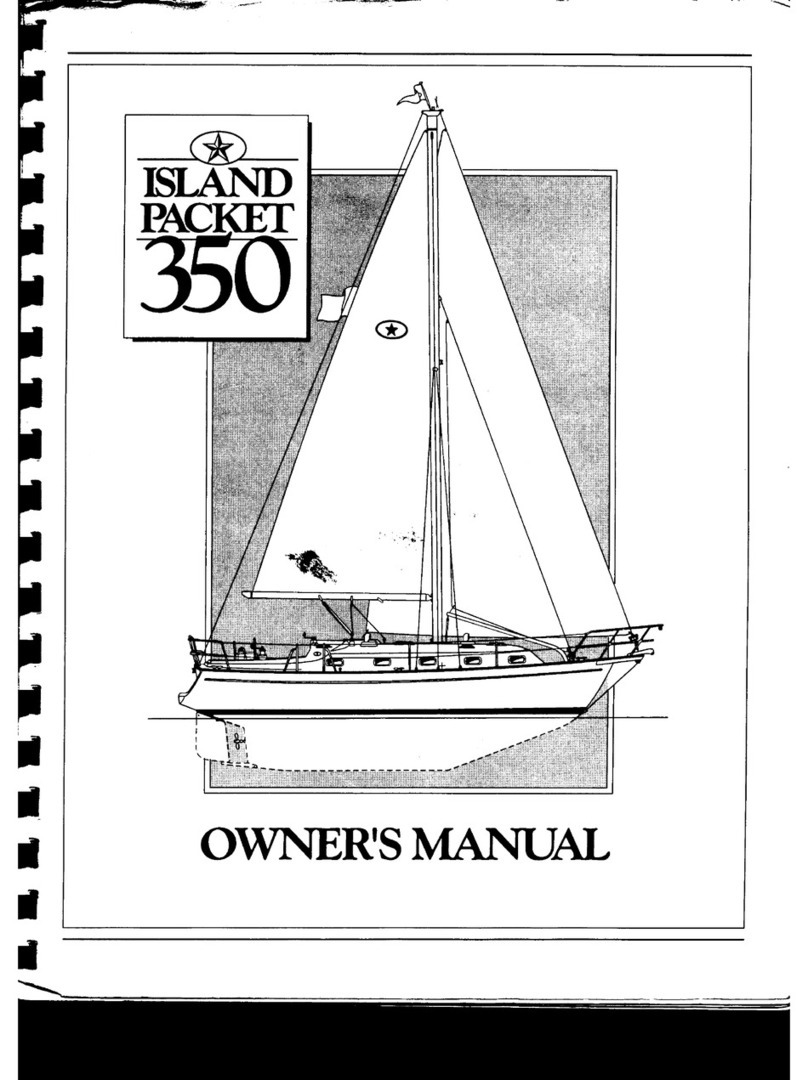
Fair Winds Quick-start Guide 7 of 8
• There are two propane lockers located in the cockpit. The forward starboard locker contains the
propane tank, which contains the solenoid and is plumbed to the stove/oven in the galley (this tank is
not connected to the BBQ grill).
• A third propane tanks is located on the stern railing near the helm. This tank is connected to the BBQ
grill and is independent of the plumbing to the stove/oven. This tank is connected directly to the BBQ
grill and isn’t plumbed into the solenoid.
• Open valve on tank in forward starboard propane locker. There is a solenoid switch next to the stove
that turns fuel ON/OFF to stove. BBQ has its own regulator for lighting the grill and adjusting heat
level.
• The forward port locker contains a spare propane tank not connected to the propane system. You will
more than likely not need to switch tanks because they are checked before each charter by the San
Juan Sailing crew.
Sails & Sailing
• Except under heavy winds, recommend deploying headsail first, then mainsail. Steer on starboard tack
with wind slightly off starboard bow while unfurling/furling (close hauled).
• Maintain light pressure on mainsail furling line when deploying, on outhaul when furling. When
furling, don’t let wrinkles form in sail as it rolls into mast.
• Maintain light pressure on jib sheet when furling headsail.
• Reffing marks: Jib (3 black dots), Main Sail (2 vertical black lines). Stay Sail (no marks). We recommend
reefing when winds reach 15 knots. At >15 knots you most likely will want to be reefed. If the Stay Sail
is furled (sail no in use) you will want to reef the Jib. If the Jib is completely furled out and the Stay Sail
is furled in, when you tack the Jib will get hung up on the Stay Sail forestay.
Shore Power
• 30 Amp / 120 Volt; 50 ft. primary cable + 25 Ft. extension cord (aft cockpit locker)
• Disconnecting
Turn off onshore breaker (typically near onshore plug).
Unplug cable from shore power outlet.
Unplug cable from boat (starboard helm seat).
• Connecting
Connect cable to boat (starboard helm seat), then to shore power outlet.
Look for blue LED light on boat connector and 3 green lights on the ProMariner panel to the
left of the “120 Volts AC” electrical panel.
Stove
• Activate the solenoid valve next to the waste can near the sink to turn “ON” the propane.
• Press in the right oven knob, turn to the burner knob (left, right, or back) to the flame symbol, then
press the burner knob in to activate the starter. Hold the burner knob for 1-2 seconds (to warm the
thermocouples) and then rotate the knob to increase / decrease flame.
• To light the oven press in the oven knob, turn to the left to the flame symbol, insert the “Bic” lighter in
the hole in the bottom of the oven and light. Adjust the flame level with the knob.
Swim Ladder
• Open the access door while standing on the platform. Pull up on the side of the ladder that is most
forward. Then pull the ladder out and unfold the sections.
• Reverse to stow the ladder.






